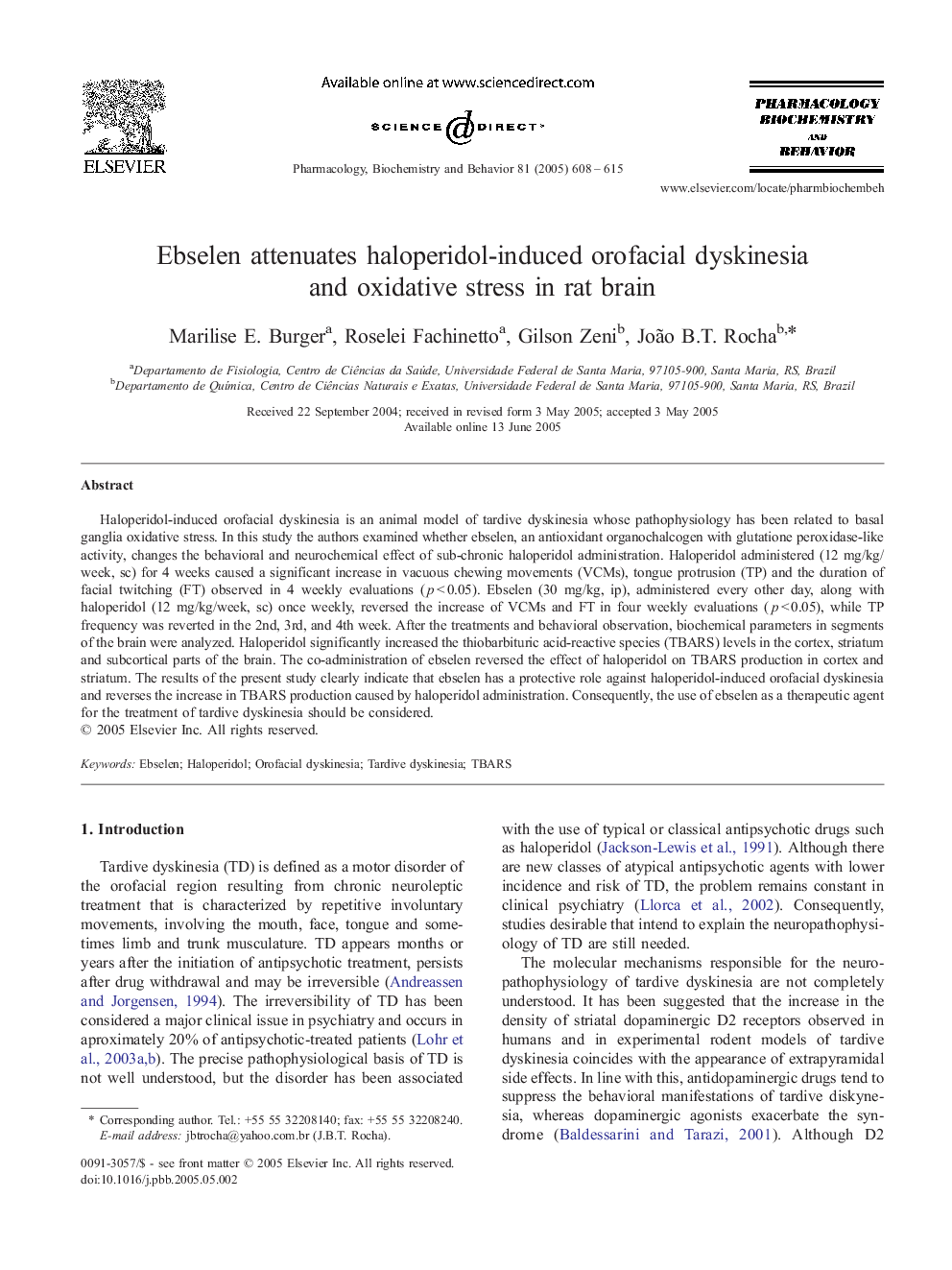| Article ID | Journal | Published Year | Pages | File Type |
|---|---|---|---|---|
| 10838850 | Pharmacology Biochemistry and Behavior | 2005 | 8 Pages |
Abstract
Haloperidol-induced orofacial dyskinesia is an animal model of tardive dyskinesia whose pathophysiology has been related to basal ganglia oxidative stress. In this study the authors examined whether ebselen, an antioxidant organochalcogen with glutatione peroxidase-like activity, changes the behavioral and neurochemical effect of sub-chronic haloperidol administration. Haloperidol administered (12 mg/kg/week, sc) for 4 weeks caused a significant increase in vacuous chewing movements (VCMs), tongue protrusion (TP) and the duration of facial twitching (FT) observed in 4 weekly evaluations (p < 0.05). Ebselen (30 mg/kg, ip), administered every other day, along with haloperidol (12 mg/kg/week, sc) once weekly, reversed the increase of VCMs and FT in four weekly evaluations (p < 0.05), while TP frequency was reverted in the 2nd, 3rd, and 4th week. After the treatments and behavioral observation, biochemical parameters in segments of the brain were analyzed. Haloperidol significantly increased the thiobarbituric acid-reactive species (TBARS) levels in the cortex, striatum and subcortical parts of the brain. The co-administration of ebselen reversed the effect of haloperidol on TBARS production in cortex and striatum. The results of the present study clearly indicate that ebselen has a protective role against haloperidol-induced orofacial dyskinesia and reverses the increase in TBARS production caused by haloperidol administration. Consequently, the use of ebselen as a therapeutic agent for the treatment of tardive dyskinesia should be considered.
Related Topics
Life Sciences
Biochemistry, Genetics and Molecular Biology
Biochemistry
Authors
Marilise E. Burger, Roselei Fachinetto, Gilson Zeni, João B.T. Rocha,
